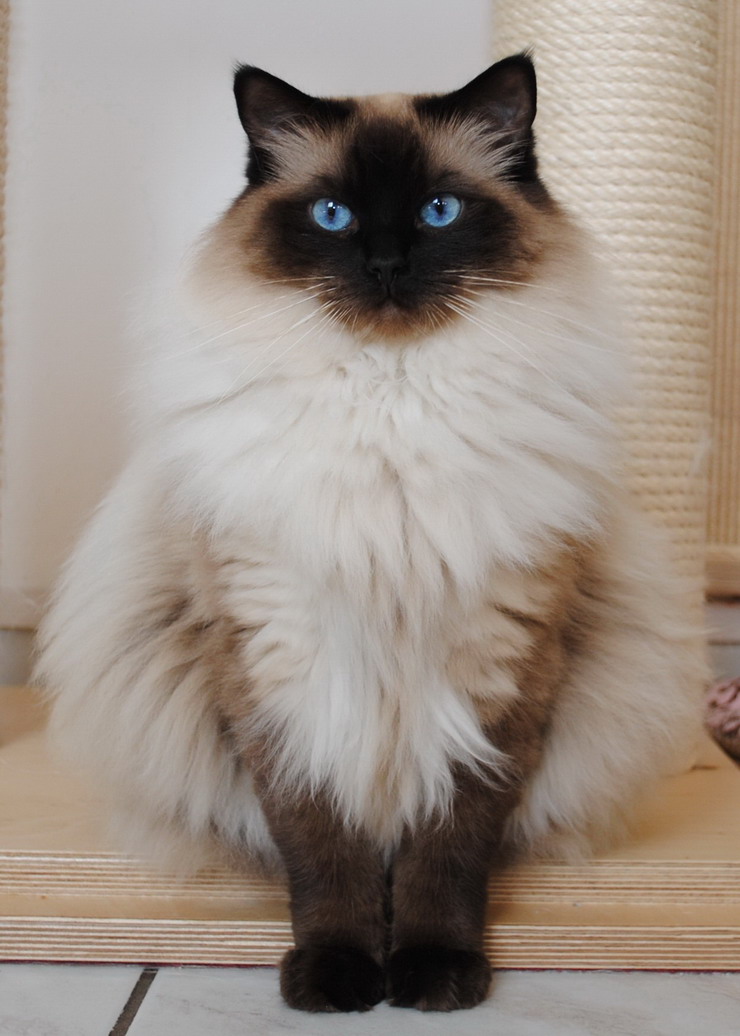
The Breed History
For this recently developed breed there is a considerable lack of
consensus as to the exact origins of early progenitors. What is
proposed is that in the 1960s this breed arose in California as a
result of a breeder starting with two foundation males, Raggedy
Ann Daddy Warbucks and another she called Blackie. Both of these
were offspring of Josephine, a white (Persian or Turkish Angora
type) cat; Warbucks and Blackie were fathered by two different
sires. Those sires continue to be an unknown, with one theory
reporting that it was a Persian that had Birman type markings
and others saying the white Persian was crossed with a seal point
Birman in one of the progenitor crosses, and that this offspring was
bred with a sable Burmese. The coat texture does not match Persian
cats, so at some point it is likely either Birman or Burmese, or
perhaps both were crossed with the white Persian-type, or perhaps
this occurred at another point in breed development.
The Ragdoll name derives from the tendency to be calm, resulting
in relaxed muscle tone when handled. They have become a popular
breed. In TICA, 2002 registration numbers topped 23000 and this
breed was fourth in popularity in that registry behind Maine Coon,
Persian, and the Bengal. In CFA, recent registration placed this breed
twelfth in popularity with much smaller numbers registered (761).
No outcrosses are allowed in CFA. The FiFe recognized the breed
in 1992 and the GCCF in 1991. The Ragamuffin is a more recently
developed breed of cats that utilized some Ragdoll influence in
development. Though the Ragdoll breed has a resemblance to the
Birman, the latter is a smaller cat, is produced in only the mitted
pattern and possesses a less angulated face.
Physical Characteristics
Weight: Female 10-14 lb (4.5-6 kg), male 12-20 lb (5.5-9 kg)
Coat patterns include:
Pointed: Colorpoint is accepted in CFF in Siamese colors of
chocolate, seal, lilac and blue. The CFA adds red and cream. The TICA
registry adds others such as cinnamon, and fawn. Hairs may be
solid, shaded, or smoke; points solid, lynx, tortie.
Van: Ears, tail and upper mask pigmented, ideally the rest of the
cat is white though up to 20% body colored is accepted in CFA. This
pattern can be shown in CFA.
Mitted: (white on forefeet to carpus-gloving gene), on rear limbs
up and over the hock (gauntlet) and white at ruff and chin (not
shown in CFA, but are registered)
Bi-color: (inverted moderately symmetrical V mask on forehead,
in white, that includes whisker pads and extends contiguously
under chin, chest, along underside). White feet are mitted due to
the gloving gene. The color of the point of the ears determines the
assigned coat color. This pattern may be shown in CFA.
Haircoat: The semi-long haircoat is fine and glossy. Hair is shorter
on head and forelimbs. Some describe the coat as having a minimal
wooly undercoat (CFA profile), but other sources describe the coat
as single. This coat is described as "rabbit fur" in texture because it
is so fine. The coat can take up to two years to mature. Body color
can be deeper than in the traditional colorpoint breeds. Coat color
tends to darken with age.
Eyes: Blue-vivid, moderately large sized, oval.
Points of Conformation: These are large cats, heavy-set build both
in fore and rear. A modified wedge shaped medium sized skull, full
muzzle and a medium to short straight nose, and wide set ears
are medium - large sized with rounded tips. Paws are large, round,
and body musculature is well developed. Tail is long and bushy and
tapers slightly. Legs are long, with hind limbs being longer than the
forelegs.
Grooming: These cats have low tendency to mat. They have
low-moderate grooming needs. They have a moderate shedding
tendency only. A steel comb or other tool can be used gently twice
a week.
Recognized Behavior Traits
Reported breed characteristics include: Very quiet cats, affectionate,
extremely docile, playful, and enjoy human contact. Reduced
hunting and fighting instincts are apparently selected for in a
typical Ragdoll cat. Name derives from their tendency to be very
placid and relax when handled (though they do not "flop", or lose
all muscle tone). Some may follow people around and are sociable
with children and other pets. Adaptable, and will leash train
easily. Excellent pets in households with seniors, other pets and
children. Not much for climbing and jumping around the home,
more accurately a lap cat. They are also soft voiced cats. Good for
apartment life.
Normal Breed Variations
Tend to obesity so need to watch caloric intake
Slow to mature (takes three to four years)
B Blood Type: Ragdoll cats tested as part of a survey in the UK
were found to be 28.6% blood type B, though the number of cats of
this breed tested was very small (n=7).
Ragdoll Kitten Information Project: An internet based
survey was carried out to determine breed normal reproductive
parameters.
232 litters, 121 litters, total kittens, 1,030
Average litter size 4.4
Stillbirth rate 5%
C-sections 3.5%
Average birth weight: Male 101 g female 96 g
Congenital deformities, in 8.5% of litters: included cleft palate,
split eyelid
The long hair phenotype in cats is a recessive so how it is distributed
in the different longhaired breeds, and coded for is of interest.
Mutation (AM412646:c.194C>A) Somali, Persian, Maine Coon, Ragdoll.
Drug Sensitivities
None reported in the literature
Inherited Diseases
Feline Hypertrophic Cardiomyopathy (HCM): HCM is the most
common cardiac condition in cats (10% prevalence). The only sign
may be sudden death; also associated with arterial thromboembolisms.
A severe early onset form of HCM was identified in a retrospective
study group of 10 Ragdoll cats (1997-1999). Cats were young
(5 months to 2 years; mean age 15 months), and had severe
concentric left ventricular hypertrophy. Six were in heart failure,
the other 4 were asymptomatic. Seven of 10 cats were male. Most
had interventricular septal hypertrophy, a bit less than half of the
group had systolic anterior motion of the mitral valve, and in 7
cats, average left atrial systolic dimension was 1.97 cm; aortic root
dimension was less than 0.85 cm in the same cats. Eight of ten cats
had a systolic murmur upon auscultation.
A novel MYBPC3 mutation has been found in Ragdoll cats. This
mutation is in a different domain than that of the Maine Coon
cat (see that chapter for more details). Two distinct and separate
mutations in this gene have been identified in unrelated breeds so
this is not likely a founder effect, but rather a novel mutation.
Disease Predispositions
Arterial Thromboembolism: Ragdoll cats were overrepresented
(odds ratio 14.4) in a population of 127 affected cats in a
retrospective study of records done at the University of Minnesota
Veterinary Medical Teaching Hospital (1992-2001). Most cats in the
study had left atrial enlargement.
Calcium Oxalate Urolithiasis: In one case control study from the
University of Minnesota Urolith Center (1981-1997), it was reported
that Ragdoll cats had an increased risk of developing this type of
uroliths.
FIP Susceptibility: An American Study found that Ragdoll cats
were significantly over-represented for a diagnosis of FIP when they
analyzed data for a 16 year period at a veterinary teaching hospital.
Rare and Isolated Reports
Polycystic Kidney Disease (PKD): Is most common in Persian
breeds and those breeds having out-crossed to Persians in their
breeding programs. In screening programs carried out at University
of California at Davis in 2002, a small group of Ragdoll cats was
checked in a study (Clinic 3); two of 11 cats were positive for PKD;
assessed by ultrasound screening of healthy cats from catteries.
Genetic Tests
Though data are limited on prevalence breed-wide, ultrasound
screening (annual) of breeding cats for hypertrophic
cardiomyopathy starting before one year of age is recommended.
A genetic test for HCM is available from UC-Davis VGL and NC State
Meurs Lab.
Blood type cats before transfusion or mating would be prudent-but
this is also based on limited breed-wide data.
Miscellaneous
- Breed name synonyms: Rag, Mitted Cat, Josephine's Daughter,
Daughters of Josephine, Cherubim, Doll.
- Registries: FIFe, TICA, ACFA, CFF, ACF, GCCF, WCF, CCA, NZCF, CFA
- Breed resources: Ragdoll Fanciers Club International:
rfci.org/
Ragdoll International (TICA): ragdollinternational.org/
Ragdoll Fanciers Worldwide Club: rfwclub.org/
The British Ragdoll Cat Club: tbrcc.co.uk/
Ragdoll Connection Network: ragdoll-cats.com/
Ragdolls of America Group:
ragdollscfa.org/about_rag.shtml
Ragdoll Breed Club (CFA): ragdollbreedclub.org
Photo Gallery of Breed - Ragdoll - Cat Breed
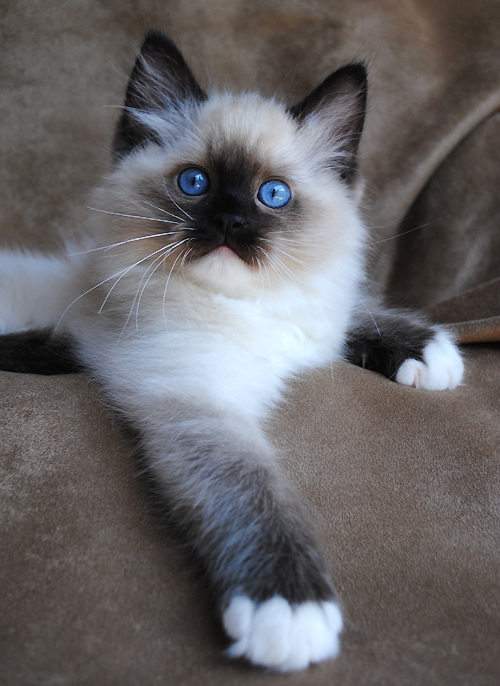

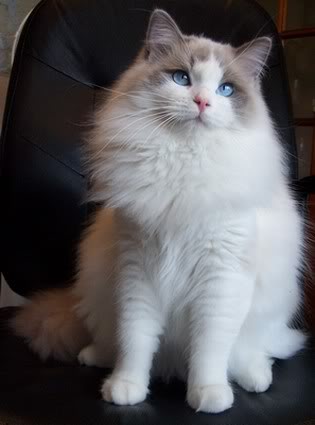

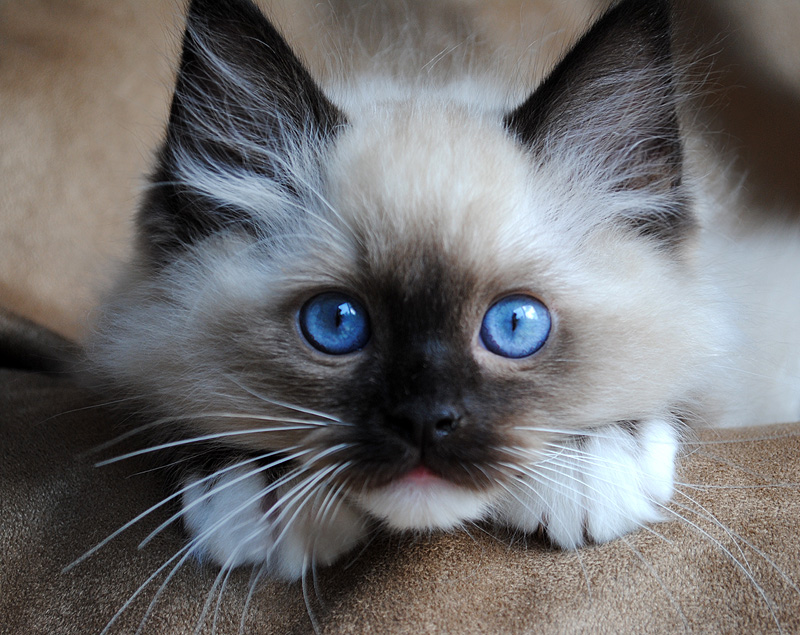

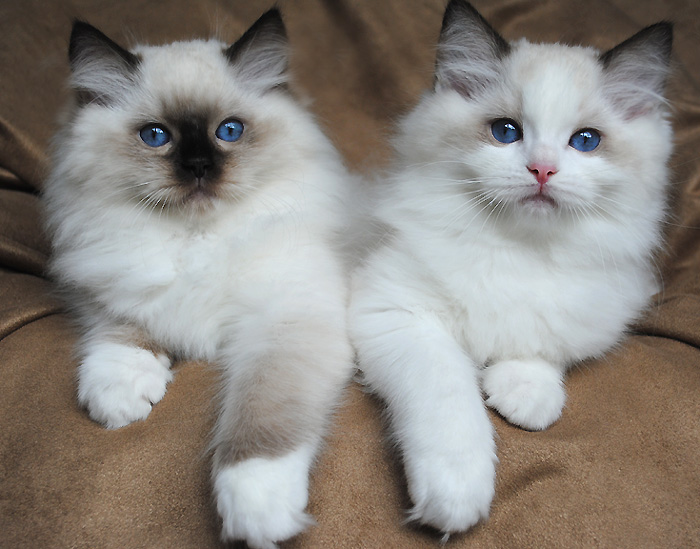
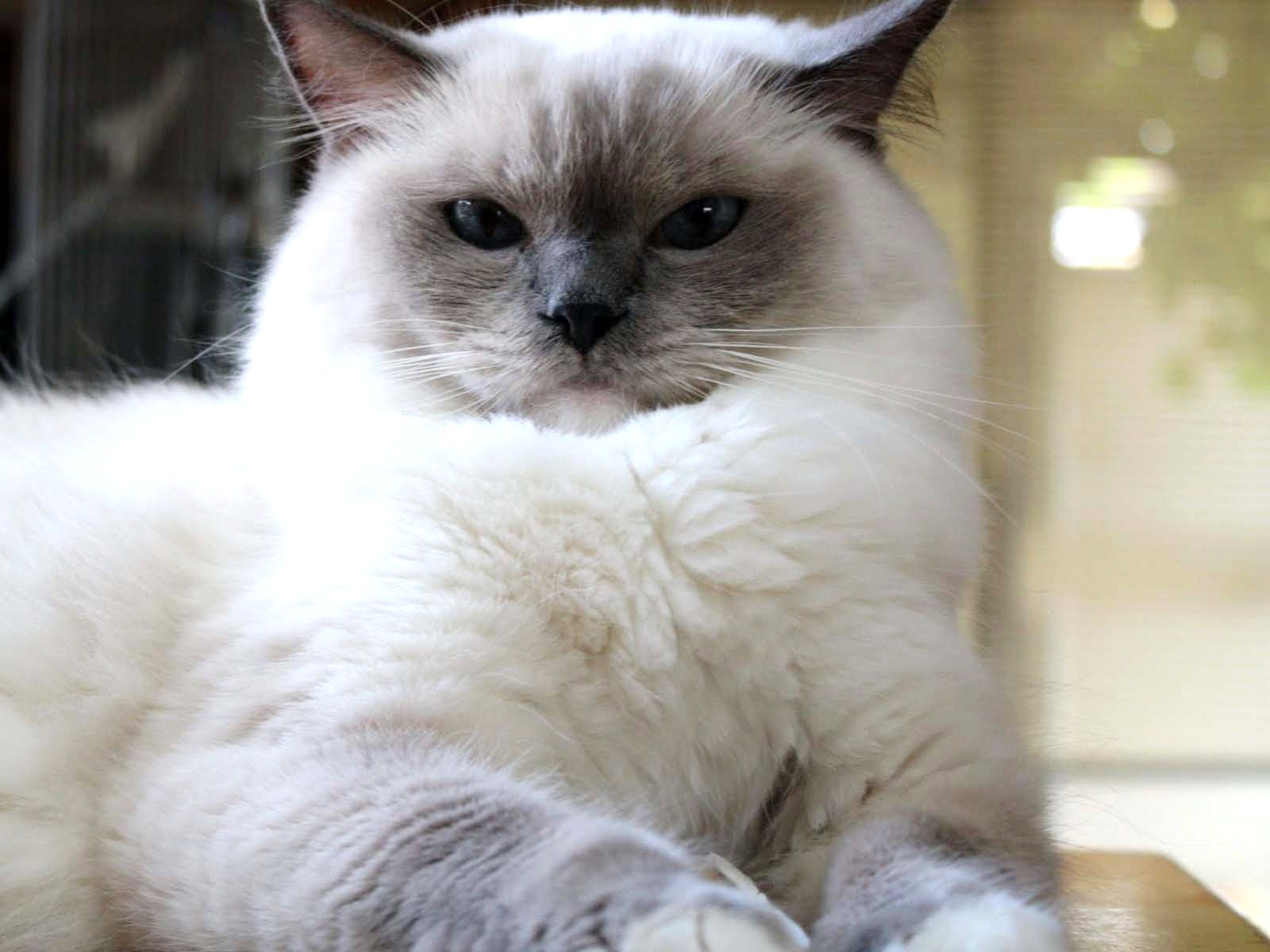
 Animalia Life
Animalia Life